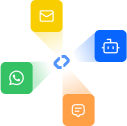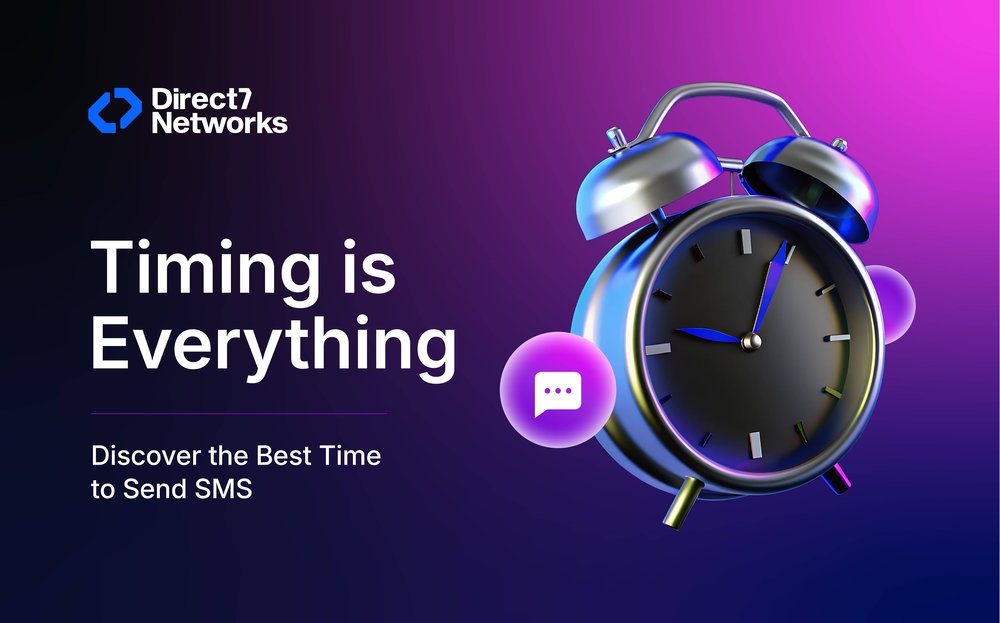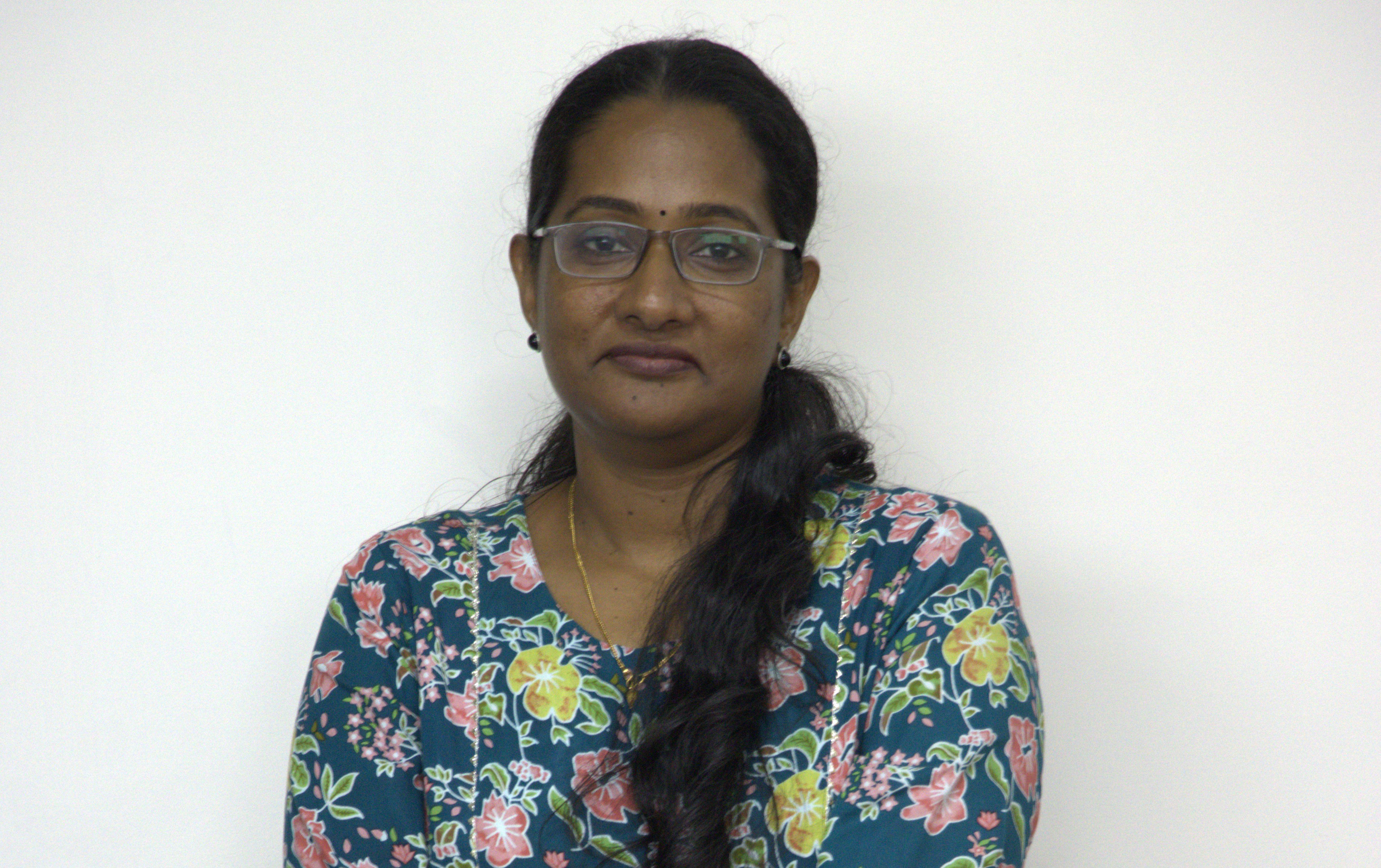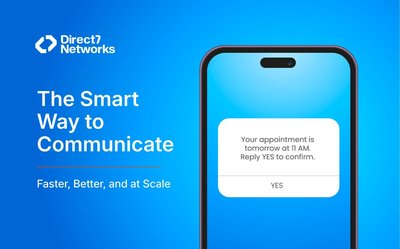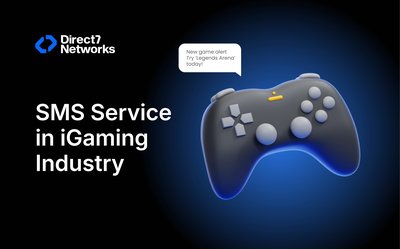SMS works because people read texts almost immediately. But the timing of your message often decides whether it earns a click—or gets ignored. This section brings together data-backed send windows, day-of-week performance patterns, and industry benchmarks, plus a simple testing plan you can run in any account.
Quick Takeaways
- Strong Default Window → 11:00 a.m.–4:00 p.m. local time is a reliable baseline for engagement. (Attentive)
- Secondary Evening Window → 5:00–7:00 p.m., sometimes extending to 9:00 p.m., works as people wrap up the day. (vibes.com, Infobip)
- Day-of-Week Performance → Thursday–Saturday tends to outperform; Mondays are usually weaker. (Omnisend, Infobip)
- Conversion Speed → Most SMS responses and purchases occur within minutes, making timing around intent more effective than mass sends. (Sakari)
- Quiet Hours Compliance → Respect legal windows:
- India: Promotional SMS allowed only 9 a.m.–9 p.m. IST.
- U.S.: TCPA “quiet hours” litigation often uses 8 a.m.–9 p.m. local time. (MessageCentral, Telesign Support Center, Privacy World, Buchalter)
Summary: Start with midday–afternoon as your baseline, experiment with evening sends, and always align with local regulations.
What the Data Actually Shows (Without the Myths)
1. Time of Day
- Converging Patterns → Multiple studies agree: performance clusters in:
- Late morning to afternoon → ~11 a.m.–4 p.m. (strong for revenue per send).
- Early evening → ~5–6 p.m. (often higher clicks, fewer opt-outs).
- Broader Windows → Some sources expand to 9 a.m.–12 p.m. and 5–9 p.m.
- Caveat → Results vary by audience type and offer category.
(Sources: Attentive, vibes.com, Infobip)
2. Day of the Week
- Retail & DTC Brands → Higher engagement Thursday–Saturday, aligning with paydays and weekend shopping intent.
- Mondays → Typically weaker, as consumers focus on work-week routines.
- Best Practice → Treat benchmarks as a starting point, not a fixed rule—validate with your own customer data.
(Source: Omnisend)
3. Behavioral Reality
- A large share of SMS conversions happens within 15–30 minutes of delivery.
- This means:
- “Right time, right person, right context” beats blasting at random.
- Triggered flows (e.g., cart abandonment, shipping updates) and send-time optimization outperform larger generic campaigns.
(Source: Sakari)
Summary: The data shows a consistent rhythm—late morning, afternoon, and early evening are prime windows. But real performance depends less on averages and more on audience behavior + context-sensitive timing.
Industry Benchmarks and Send Windows
The best time to send SMS varies across industries. Below are data-backed windows, inferred patterns, and operational notes you can test first. Where data is limited, guidance reflects informed inference.
1.Ecommerce & Retail
- Recommended Windows:
- Thu–Sat: 10:00–12:00 and 17:00–19:00 local time.
- Add lunchtime drops (12:00–14:00) for flash sales or back-in-stock alerts.
- Why It Works:
- Consumer purchase intent rises toward weekends.
- Midday and evening slots catch people when they can browse and buy.
- Benchmarks:
- Track click-through rate (CTR) and placed-order rate per send.
- Conversion rates are usually lower than finance/tech but volume and timeliness drive results.
- Seasonal Note:
- During Black Friday/Cyber Monday (BFCM), performance often peaks before and after the main days.
- Spread campaigns across the week to capture intent early and extend momentum. (postscript.io)
2.Restaurants, Food & Beverage (inferred from general SMS data)
- Recommended Windows:
- Lunch promos: 10:30–11:30 (close to decision-making time).
- Dinner promos: 15:00–17:00 (when people plan meals).
- Weekends (Fri–Sat) often strong for dine-out intent.
- Why It Works:
- You intercept meal decisions at the planning stage.
- Too early = forgotten; too late = pushy.
- Operational Note:
- SMS is effective for waitlist management and reservation confirmations. (slang.ai)
3.Healthcare (Appointments & Updates)
- Recommended Cadence:
- Confirmation: 48–72 hours before.
- Reminder: 24–48 hours before.
- Final Nudge: 2–3 hours before.
- Next-Day Confirmations: Sending around 17:00–19:00 can catch people after work.
- Why It Works:
- Multiple studies show SMS reminders reduce no-shows and improve attendance.
- Success depends more on cadence than single timing. (PubMed Central, CareCloud)
4.Finance & Insurance (inferred + general SMS data)
- Recommended Windows:
- Tue–Thu, 11:00–14:00 for marketing.
- Transactional alerts: send immediately (no “best time” logic).
- Why It Works:
- Business-hours align with decision-making cycles that require trust and paperwork.
- SMS nudges users toward secure portals; avoid sensitive data in text body.
5.Travel & Hospitality (inference + event-triggered best practices)
- Recommended Windows:
- Offers: Thu–Fri, 12:00–18:00 (weekend and short-term trip planning).
- Trip Updates: Trigger-based, immediate.
- Check-In Reminders: 24 hours and 3–4 hours before.
- Why It Works:
- Consumers research trips before weekends.
- Operational alerts (delays, boarding gates) must be real-time
6.SaaS & B2B Services
- Recommended Windows:
- Tue–Thu, 11:00–16:00 (recipient’s local time).
- Avoid weekends.
- Why It Works:
- B2B communication is strongest during work cycles.
- Messages should be short, purpose-driven (e.g., demo reminders, trial nudges).
7.Logistics, Delivery, and Service Updates
- Recommended Windows:
- Immediate, trigger-based sends: order placed, out-for-delivery, driver nearby.
- Why It Works:
- Utility texts build trust when they are instant and accurate.
- Timing rules for marketing do not apply here.
Benchmark Snapshot Across Verticals
- Ecommerce/Retail → Conversion rates: ~11–20%.
- Tech/SaaS → Often 30%+.
- Healthcare & Finance → Commonly track 20%+.
(Sources: SMS Marketing Services, Infobip, Klaviyo)
Key Metric to Watch: Go beyond CTR—measure “revenue per recipient” and opt-out rate alongside clicks to understand true ROI.
Summary: Industry SMS performance depends on intent-driven timing. Use sector benchmarks as a starting point, then test and localize for your customer base.
Global vs. Local: Time Zone, Culture, and Compliance
When scaling SMS, timing isn’t just about engagement—it’s also about respecting local laws, cultural expectations, and regulatory codes.
1. Always Send in the Recipient’s Local Time
- This is table stakes for any national or global list.
- Use time zone-aware send controls to avoid frustrating users by pinging them at odd hours.
(Source: Rebrandly)
Tip: Even small regional misalignments (e.g., sending at 6:00 a.m.) can feel intrusive and hurt trust.
2. Respect Quiet Hours and National Rules
United States (TCPA)
- Baseline Rule → Federal calling rules reference 8:00 a.m.–9:00 p.m. local time.
- Recent Risks → Plaintiffs have filed lawsuits arguing these quiet hours apply to marketing texts under the Telephone Consumer Protection Act (TCPA).
- Practical Guidance →
- Avoid promotional SMS outside 8:00 a.m.–9:00 p.m.
- Only send outside these hours if you have explicit consent and legal counsel approval.
(Sources: Buchalter, National Law Review)
India (TRAI/DLT)
- Promotional SMS → Restricted to 9:00 a.m.–9:00 p.m. IST.
- Transactional/Service SMS→ Allowed 24×7, but must follow header and content template rules.
- 2025 Update → India introduced a national suffix system labeling messages:
- P = Promotional
- S = Service
- T = Transactional
- G = Government
- Best Practice → Always plan sends within the permitted window and apply the correct suffix.
(Sources: MessageCentral, Telesign Support Center, The Economic Times)
Carrier & Industry Codes (CTIA, USA)
- Requirements (strictly enforced by carriers):
- Obtain proper opt-in.
- Support STOP and HELP commands.
- Honor opt-outs immediately.
- These are not suggestions—violations can lead to blocked traffic and carrier penalties.
(Sources: CTIA API, ctia.org)
Summary: Global campaigns must localize. Align with recipient time zones, respect quiet hours, and follow national/commercial codes. Missing these steps risks not only engagement but also lawsuits, fines, and carrier blocks.
A Simple, No-Nonsense Testing Plan (3 Weeks)
If you don’t yet have much SMS performance data, this three-week testing plan helps you find a “local maximum” quickly—without overcomplicating.
Week 1 — Broad Scan (Time-of-Day Test)
- Setup: Split your audience into three equal cohorts.
- Exclude recent purchasers or high-value customers to avoid skewing results.
- Send Windows to Test (same message, same day):
- 11:00–13:00
- 15:00–17:00
- 18:00–20:00 (only if legal in that region)
- Control: Keep the day constant (e.g., Thursday) to isolate time-of-day effects.
- Metrics to Track:
- Delivery rate
- Click-through rate (CTR)
- Conversion (placed order or goal completion)
- Unsubscribes
- Revenue per recipient (RPR) → best single profitability metric
(Source: Klaviyo)
Week 2 — Day-of-Week Test
- Take the top-performing time window from Week 1.
- Send the same message on different days:
- Example spread: Tuesday, Thursday, Saturday.
- Compare performance to identify the strongest day of the week.
Week 3 — Industry-Fit Cadence Test
- Combine your winning day + winning time from Weeks 1 and 2.
- Test frequency and offer type:
- Weekly vs. Twice-weekly sends.
- Discount offer vs. Non-discount offer.
- Monitor Opt-Outs:
If opt-outs spike, pull back frequency or tighten targeting.
Regulatory Tip
- Always run tests inside allowed quiet hours.
- India: Promotional SMS must remain within 09:00–21:00 IST. (MessageCentral)
- Align with TCPA (US) and other local regulations to avoid compliance risks.
Summary: In just 3 weeks, you’ll know the best time, best day, and optimal cadence for your SMS program—measured by clicks, co
How to Make Timing Work Harder (Beyond a Calendar)
Timing isn’t just about “what day and what hour.” The most effective SMS programs combine behavioral triggers, smart scheduling, and channel coordination. Here are five proven tactics:
1. Trigger by Behavior, Not Just the Clock
- Examples:
- Browse abandonment reminders.
- Price-drop alerts.
- Back-in-stock notifications.
- Reorder nudges.
- Why It Works: Conversions happen because the context is fresh—intent is high, so exact delivery time matters less.
- Data Insight: Many SMS conversions occur within minutes of send, making behavioral triggers far stronger than random blasts.
(Source: Sakari)
2. Use “Send Time by Time Zone”
- Best Practice: If your audience spans countries or multiple U.S. time zones, schedule messages by recipient’s local time.
- Why It Works: Eliminates the problem of hitting people too early or too late.
- Impact: This simple adjustment often outperforms chasing a single “magic hour.”
(Source: Rebrandly)
3. Pair Channels for Coverage
- Challenge: Quiet-hour rules may block late-night SMS.
- Solution:
- Send email late at night.
- Follow up with SMS the next morning.
- Peak Retail Weeks: Combine early and late sends across channels to “bracket” intent and maximize visibility.
(Source: Attentive)
4. Mind Frequency (Consistency > Randomness)
- Key Point: There’s no universal “perfect number” of SMS per week.
- Practical Approach:
- Many brands stick to a fixed cadence (e.g., every other Friday at 13:00 local time).
- Layer triggered messages (cart reminders, back-in-stock alerts) around this base schedule.
- Monitor Feedback: Track opt-outs and reply rates—if they spike, scale back.
(Source: SMS Marketing Services)
5. Keep Messages Short and Clear
- Best Practices:
- Use concise copy.
- Include a clear CTA (Call-to-Action).
- Limit to one link per message.
- Why It Works: High-performing campaigns show concise structure + strong CTA can meaningfully lift clicks and conversions—even without discounts.
(Source: Attentive)
Summary: Smart SMS timing means behavioral triggers, time zone alignment, channel pairing, consistent cadence, and concise copy. These tactics make your sends feel timely, relevant, and effective—without spamming your list.
Sample Timing Playbooks
Below are sample SMS playbooks that combine best practices in timing, cadence, and triggers for different industries. Use these as templates and adapt them to your audience.
1. Ecommerce Launch or Sale
- Teaser → Wednesday 16:00 (build anticipation).
- Live Launch → Thursday 11:30 (midday attention).
- Reminder → Friday 18:00 (if local quiet-hour rules permit).
- Last Chance → Saturday 11:00 (weekend shoppers).
- Post-Purchase → Immediate transactional confirmation + 48 hours later cross-sell.
Why It Works: This cadence brackets the weekend intent curve, nudges urgency, and extends value with post-purchase cross-sells.
2. Healthcare Clinic
- Booking Confirmation → Immediate after appointment scheduled.
- Reminder 1 → 48 hours before visit.
- Reminder 2 → 24 hours before visit.
- Same-Day Nudge → 3 hours before visit.
- Follow-Up → 24–48 hours after visit (care instructions or patient survey).
Evidence: Multiple studies confirm that this cadence reduces no-shows and improves patient satisfaction. (Source: PubMed Central)
3. Restaurant
- Weekly Offers → Thursday 15:30 (timed for dinner planning).
- Brunch Promo → Saturday 10:30 (when weekend plans form).
- Reservation/Waitlist Updates → Triggered in real time (e.g., “Table ready,” “15-min heads-up”).
Why It Works: SMS aligns with meal decision moments; real-time waitlist triggers create convenience and loyalty.
Summary: Each industry benefits from a timing framework tuned to intent—whether it’s urgency (ecommerce), reliability (healthcare), or convenience (restaurants).
Putting It All Together
- Start with proven windows: late morning to late afternoon, plus early evening where legal. (Attentive, vibes.com)
- Align every send to the recipient’s local time zone and regional rules. (Rebrandly)
- Run the 3-week test plan (see earlier section) to localize your best day and time.
- Shift more volume toward triggered and contextual messages, where timing follows behavior rather than the calendar. (Sakari)
- Track RPR, CTR, conversions, unsubscribes, and adjust cadence as needed.
Table Cheatsheet :-
Best Send Windows (General Benchmarks)
| Region/Pattern | Best Time Windows | Notes |
|---|---|---|
| Global Default | 11:00–16:00 local time | Safe baseline across industries. |
| Secondary Window | 17:00–19:00 (sometimes up to 21:00) | Works well as people wrap up the day. |
| Best Days | Thu–Sat | Stronger intent (paydays, weekends). Mondays are weaker. |
| Conversion Behavior | Within 15–30 minutes of send | Timing around behavior > blasting. |
Final Thought: Done right, timing turns good texts into revenue. Use benchmarks to get moving, but let your own data make the final call.
